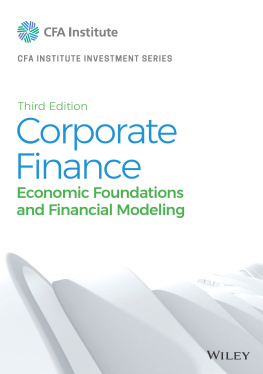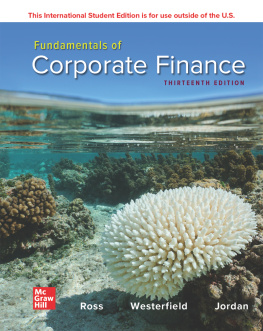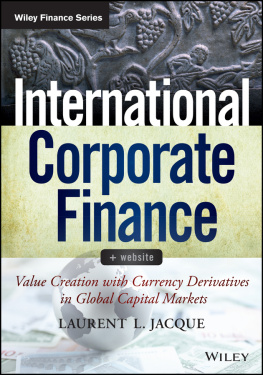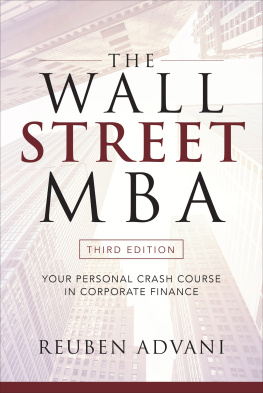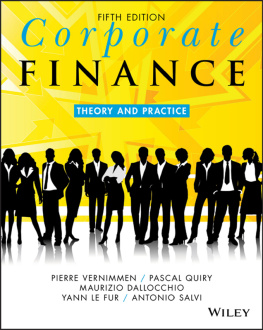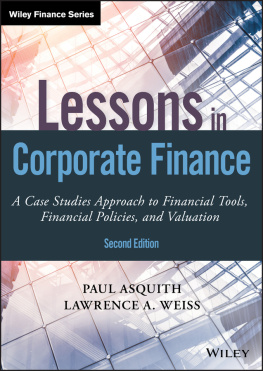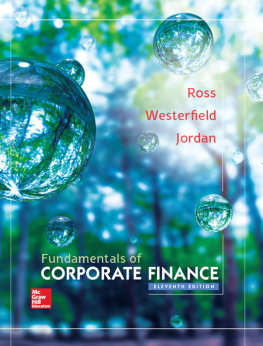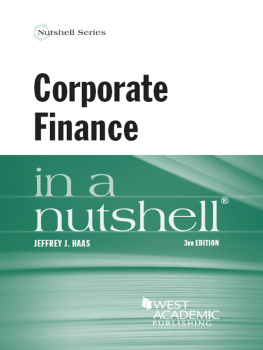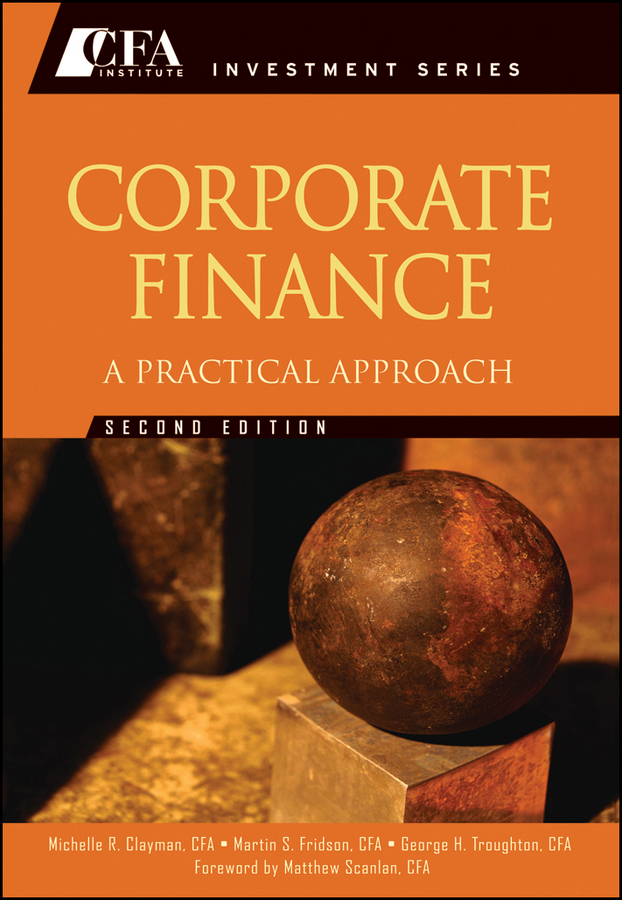CONTENTS
CFA Institute is the premier association for investment professionals around the world, with over 101,000 members in 134 countries. Since 1963 the organization has developed and administered the renowned Chartered Financial Analyst Program. With a rich history of leading the investment profession, CFA Institute has set the highest standards in ethics, education, and professional excellence within the global investment community, and is the foremost authority on investment profession conduct and practice.
Each book in the CFA Institute Investment Series is geared toward industry practitioners along with graduate-level finance students and covers the most important topics in the industry. The authors of these cutting-edge books are themselves industry professionals and academics and bring their wealth of knowledge and expertise to this series.

Copyright 2012 by CFA Institute. All rights reserved.
Published by John Wiley & Sons, Inc., Hoboken, New Jersey
Published simultaneously in Canada
No part of this publication may be reproduced, stored in a retrieval system, or transmitted in any form or by any means, electronic, mechanical, photocopying, recording, scanning, or otherwise, except as permitted under Section 107 or 108 of the 1976 United States Copyright Act, without either the prior written permission of the Publisher, or authorization through payment of the appropriate per-copy fee to the Copyright Clearance Center, Inc., 222 Rosewood Drive, Danvers, MA 01923, (978) 750-8400, fax (978) 646-8600, or on the web at www.copyright.com. Requests to the Publisher for permission should be addressed to the Permissions Department, John Wiley & Sons, Inc., 111 River Street, Hoboken, NJ 07030, (201) 748-6011, fax (201) 748-6008, or online at http://www.wiley.com/go/permissions.
Limit of Liability/Disclaimer of Warranty: While the publisher and author have used their best efforts in preparing this book, they make no representations or warranties with respect to the accuracy or completeness of the contents of this book and specifically disclaim any implied warranties of merchantability or fitness for a particular purpose. No warranty may be created or extended by sales representatives or written sales materials. The advice and strategies contained herein may not be suitable for your situation. You should consult with a professional where appropriate. Neither the publisher nor author shall be liable for any loss of profit or any other commercial damages, including but not limited to special, incidental, consequential, or other damages.
For general information on our other products and services or for technical support, please contact our Customer Care Department within the United States at (800) 762-2974, outside the United States at (317) 572-3993 or fax (317) 572-4002.
Wiley also publishes its books in a variety of electronic formats. Some content that appears in print may not be available in electronic formats. For more information about Wiley products, visit our web site at www.wiley.com.
Library of Congress Cataloging-in-Publication Data:
Corporate finance : a practical approach / [edited by] Michelle R. Clayman, Martin S. Fridson, George H. Troughton. 2nd ed.
p. cm. (CFA Institute investment series; 42)
Includes index.
ISBN 978-1-118-10537-5 (cloth); ISBN 978-1-118-21729-0 (ebk);ISBN 978-1-118-21730-6 (ebk); ISBN 978-1-118-21731-3 (ebk)
1. CorporationsFinance. I. Clayman, Michelle R. II. Fridson, Martin S. III. Troughton, George H.
HG4026.C67 2012
658.15dc23
2011039258
FOREWORD
I am honored to introduce this second edition of Corporate Finance: A Practical Approach, which promises to be an important and comprehensive discourse on corporate financial management. The significant additions in this edition and revisions to the first edition build on the topic areas introduced in 2008. Furthermore, they bring much-needed practical dimensions to the complex and dynamic aspects of corporate finance.
Certainly, the global financial landscape has changed dramatically since the release of the first edition of this work. The economic drama and financial carnage injected into the marketplace starting in late 2007 have penetrated the very core of financial thought and practice and have challenged long-standing economic beliefs and relationships. The effects on corporate governance, capital structure, and budgeting caused by this extreme market volatility and economic upheaval have moved corporate treasurers and chief financial officers to the front lines in their companies continuing pursuits of profitability and financial security. Only those institutions that can quickly adapt their financial management and corporate structure to this new normal will survive well into the future. The chapters in this edition have been revised to take into consideration some of the profound changes that have affected this new global financial setting. Yet, it is refreshing to note that no matter what economic environment exists in the future, sound, traditional financial management practices will always be essential to the long-term success of any entity.
The authors of these chapters are leading industry practitioners and recognized academic thought leaders. Their unique perspectives and thorough understanding of their respective topic areas are invaluable in providing readers with a factual exposition of the subject matter. In addition, their commonsense approach of highlighting important learning outcomes and incorporating practical problem-solving tools gives readers techniques they can apply in real-world financial settings.
Like the original text, this edition is assembled from readings used in the CFA Program curriculum. The CFA Program is a comprehensive, self-directed, distance learning program administered by CFA Institute. Since the early 1960s, the attainment of the CFA designation has been viewed as a significant achievement in the realm of finance and investment management. Those who enter the CFA Program sit for three consecutive and rigorous examinations that cover a broad range of important financial topics, including accounting, quantitative methods, equity and fixed-income analysis, portfolio management, and ethics. Most who enter this program already possess a strong record of achievement in the financial industry, as well as advanced business degrees, but welcome the additional focus and comprehensive curriculum of this designation program. I am fortunate to have earned the CFA charter and am proud to serve on the Board of Governors of CFA Institute.
WHY THIS TEXT IS IMPORTANT
Competing in the global financial arena has been a far more daunting challenge during this decade than in earlier periods. The scarcity of credit and risk capital following the global financial challenges of the past few years, along with the evolution of emerging economies as formidable players on the world financial stage, demands that businesses operate at utmost efficiency. Optimal financial management and peak operating effectiveness are prerequisites not only for success but also for survival. And in order to successfully commit risk capital, companies must incorporate disciplined, systematic capital-budgeting techniques so as to allocate capital to only those projects with optimal returns. Furthermore, companies must be able to understand the life spans of projects, effectively anticipate cash flow needs, and accurately forecast lean periods in their liquidity to avoid potentially devastating shocks to their financial and market health. Also critical in this new financial environment is the ability to properly analyze the effects of inflation, disinflation, foreign currency shocks, and regulatory risk on existing projects, as well as the ability to recognize capital-budgeting biases and errors. This book offers comprehensive insights into avoiding these common pitfalls.


